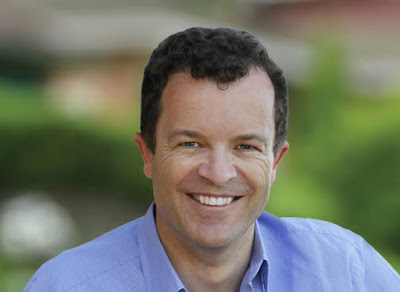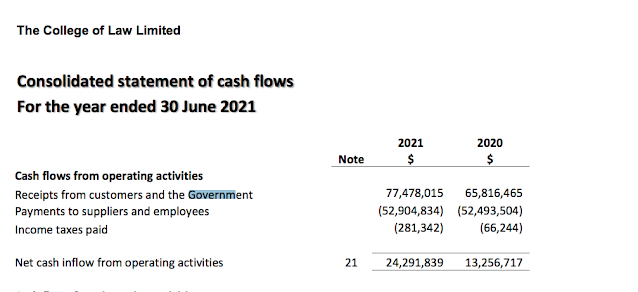Anwar's back & so is Phileo Tong, pushing crowd funding for homes scheme which failed in Oz-Research shows failure is inevitable.
by Ganesh Sahathevan
First, something reminiscent of the late 90s, just before the Anwar Crash of 98:

Prime Minister Tun Dr Mahathir Mohamad (centre), The Edge Media Group Chairman Datuk Tong Kooi Ong (2nd from right) and Eco World Development Group Bhd chairman and founder Tan Sri Rashid Abdul Manaf (3rd from left) with the first FundMyHome homebuyers. (Photo by Low Yen Yeing/EdgeProp.my)
First, something reminiscent of the late 90s, just before the Anwar Crash of 98:

Prime Minister Tun Dr Mahathir Mohamad (centre), The Edge Media Group Chairman Datuk Tong Kooi Ong (2nd from right) and Eco World Development Group Bhd chairman and founder Tan Sri Rashid Abdul Manaf (3rd from left) with the first FundMyHome homebuyers. (Photo by Low Yen Yeing/EdgeProp.my)
That financial genius, Tong Kooi Ong insists that the scheme will take off(like his model plane project, but that is another story).
Meanwhile , the Australian experience shows that this is pie in the sky, and good empirical research explains why, as this writer reported in 2008
:
4
Investment in Low Cost Housing by Institutional Funders-Is The Housing Minister Aware Of The Facts?
Housing Minister Tanya Plibersek and Tony Jones on Lateline:
TONY JONES: Very quickly on the superannuation funds that you're hoping will join this, have you spoken to them? Have they expressed interest and have they indicated they're prepared to put up the funds to do this?
TANYA PLIBERSEK: We've had a lot of discussions with superannuation funds and other types of investors and they say they've been really looking for a way of investing in affordable housing in Australia. As was said earlier in the program, some invest in affordable housing overseas. They haven't been able to in Australia. They've been investing in commercial property and retail and so on, but not in this more affordable end of the market. That's what makes me so excited about this new proposal. It's great to see Australians' superannuation money in particular, making a contribution to making housing more affordable for lower income Australians.
(http://www.abc.net.au/lateline/content/2007/s2178777.htm)
The Facts Of Investing In Low Cost Housing in Australia:
Extracted from:
Evaluating returns in the residential rental sector ,
Peter Rossini, Paul Kershaw, Wayne Marano and Valerie Kupke
Centre for Land Economics and Real Estate Research (CLEARER),
University of South Australia, Adelaide, Australia
Publsihed in Property Management ,Vol. 23 No. 4, 2005
pp. 286-300
This study has attempted to determine an appropriate form of yield analysis that will allow for an accurate comparison of returns between low and high cost housing,
through the use of disaggregated data. The results of the research would suggest that, based on aggregate data,accurate information about returns in the private rental market could not be assumed. Not only may useful information be difficult to find; much of the information that does exist is based on erroneous assumptions...... more accurate reporting of returns would put in place the appropriate risk premium for investment in lower cost rental housing. This research shows that the risk premium is only about 0.5 percent. However, in order to match other investments it should be about 1 or 2 percent. The main risk perceived by investors would appear to be tenants. As such, policy makers need to look at schemes that would more adequately cover this risk
In other words, there is not enough information about this asset class for any institution to make an investment. Even if they did make an investment they are likely to want to be compensated or otherwise covered by the Government for the type of tenants that they would have to deal with-ie poor people are a more risky investment,and it would be up to the Government to underwrite the inherent risk.
These are not matters that Ms Plibersek seems to have addressed.
TONY JONES: Very quickly on the superannuation funds that you're hoping will join this, have you spoken to them? Have they expressed interest and have they indicated they're prepared to put up the funds to do this?
TANYA PLIBERSEK: We've had a lot of discussions with superannuation funds and other types of investors and they say they've been really looking for a way of investing in affordable housing in Australia. As was said earlier in the program, some invest in affordable housing overseas. They haven't been able to in Australia. They've been investing in commercial property and retail and so on, but not in this more affordable end of the market. That's what makes me so excited about this new proposal. It's great to see Australians' superannuation money in particular, making a contribution to making housing more affordable for lower income Australians.
(http://www.abc.net.au/lateline/content/2007/s2178777.htm)
The Facts Of Investing In Low Cost Housing in Australia:
Extracted from:
Evaluating returns in the residential rental sector ,
Peter Rossini, Paul Kershaw, Wayne Marano and Valerie Kupke
Centre for Land Economics and Real Estate Research (CLEARER),
University of South Australia, Adelaide, Australia
Publsihed in Property Management ,Vol. 23 No. 4, 2005
pp. 286-300
This study has attempted to determine an appropriate form of yield analysis that will allow for an accurate comparison of returns between low and high cost housing,
through the use of disaggregated data. The results of the research would suggest that, based on aggregate data,accurate information about returns in the private rental market could not be assumed. Not only may useful information be difficult to find; much of the information that does exist is based on erroneous assumptions...... more accurate reporting of returns would put in place the appropriate risk premium for investment in lower cost rental housing. This research shows that the risk premium is only about 0.5 percent. However, in order to match other investments it should be about 1 or 2 percent. The main risk perceived by investors would appear to be tenants. As such, policy makers need to look at schemes that would more adequately cover this risk
In other words, there is not enough information about this asset class for any institution to make an investment. Even if they did make an investment they are likely to want to be compensated or otherwise covered by the Government for the type of tenants that they would have to deal with-ie poor people are a more risky investment,and it would be up to the Government to underwrite the inherent risk.
These are not matters that Ms Plibersek seems to have addressed.


Comments
Post a Comment